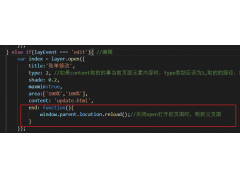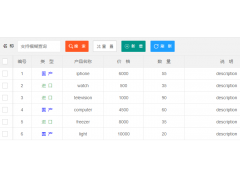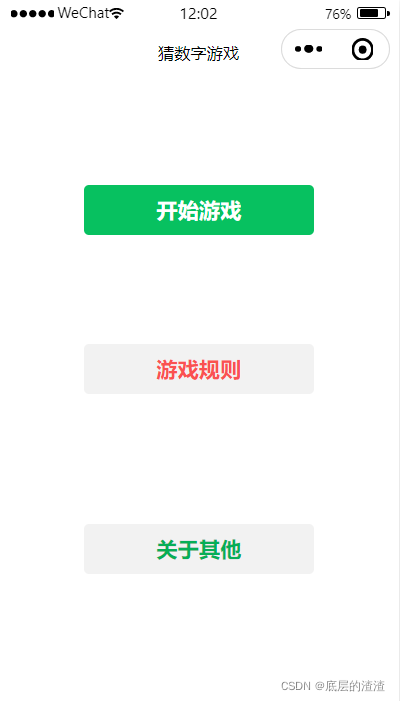Konva infinite grid in React(React 中的 Konva 无限网格)
问题描述
我,我正在尝试通过一个包 react -konva 来学习如何使用画布.我找到了我需要用 javascript 编写的确切内容,但我需要让它像反应组件一样,并在按钮单击矩形的地方添加图像.谁能帮我重新组织代码以在反应中显示它......这是我在网上找到的小提琴......https://jsfiddle.net/kiksy/jqo2h3dx/2/
i,m trying to learn how to use canvas via a package react -konva. I fount the exact thing what i nead write in javascript but i nead to have it like react component and add images where rectangles are on button click. Can anyone help me to reorganize the code to display it in react.... This is the fiddle that i found on the web...https://jsfiddle.net/kiksy/jqo2h3dx/2/
const stage = new Konva.Stage({
container: 'container',
width: window.innerWidth,
height: window.innerHeight,
draggable: true
});
const layer = new Konva.Layer();
stage.add(layer);
const WIDTH = 100;
const HEIGHT = 100;
const grid = [
['red', 'yellow'],
['green', 'blue']
];
const blocks = [
{ w: 150, h: 150 , background: "white" , image: "/img/test2.png" , fullImage: false, title: "" , text: "" },
{ w: 150, h: 150 , background: "white" , image: "/img/person-icon.png" , fullImage: false ,title: "" , text: "" },
{ w: 150, h: 150 , background: "#575756" , image: "" , fullImage: false, title: "Title" , text: "" },
{ w: 300, h: 300 , background: "white" , image: "/img/test.png", fullImage: true, title: "" , text: "" }
];
function checkShapes() {
const startX = Math.floor((-stage.x() - stage.width()) / WIDTH) * WIDTH;
const endX = Math.floor((-stage.x() + stage.width() * 2) / WIDTH) * WIDTH;
const startY = Math.floor((-stage.y() - stage.height()) / HEIGHT) * HEIGHT;
const endY = Math.floor((-stage.y() + stage.height() * 2) / HEIGHT) * HEIGHT;
var i = 0;
for(var x = startX; x < endX; x += WIDTH) {
for(var y = startY; y < endY; y += HEIGHT) {
if(i === 4)
{
i = 0;
}
const indexX = Math.abs(x / WIDTH) % grid.length;
const indexY = Math.abs(y / HEIGHT) % grid[0].length;
layer.add(new Konva.Rect({
x,
y,
width: WIDTH,
height: HEIGHT,
fill: grid[indexX][indexY],
stroke: 'black',
strokeWidth: 4
}))
if(blocks[i].title != ""){
var complexText = new Konva.Text({
x,
y,
text: "TEST TEXT",
fontSize: 14,
fontFamily: 'Calibri',
fill: 'white',
width: WIDTH,
height: HEIGHT,
verticalAlign: 'middle',
align : "center"
});
layer.add(complexText);
}
}
i++
}
}
checkShapes();
layer.draw();
stage.on('dragend', () => {
layer.destroyChildren();
checkShapes();
layer.draw();
})
推荐答案
这是我的解决方案:
const WIDTH = 100;
const HEIGHT = 100;
const grid = [["red", "yellow"], ["green", "blue"]];
const App = () => {
const [stagePos, setStagePos] = React.useState({ x: 0, y: 0 });
const startX = Math.floor((-stagePos.x - window.innerWidth) / WIDTH) * WIDTH;
const endX =
Math.floor((-stagePos.x + window.innerWidth * 2) / WIDTH) * WIDTH;
const startY =
Math.floor((-stagePos.y - window.innerHeight) / HEIGHT) * HEIGHT;
const endY =
Math.floor((-stagePos.y + window.innerHeight * 2) / HEIGHT) * HEIGHT;
const gridComponents = [];
var i = 0;
for (var x = startX; x < endX; x += WIDTH) {
for (var y = startY; y < endY; y += HEIGHT) {
if (i === 4) {
i = 0;
}
const indexX = Math.abs(x / WIDTH) % grid.length;
const indexY = Math.abs(y / HEIGHT) % grid[0].length;
gridComponents.push(
<Rect
x={x}
y={y}
width={WIDTH}
height={HEIGHT}
fill={grid[indexX][indexY]}
stroke="black"
/>
);
}
}
return (
<Stage
x={stagePos.x}
y={stagePos.y}
width={window.innerWidth}
height={window.innerHeight}
draggable
onDragEnd={e => {
setStagePos(e.currentTarget.position());
}}
>
<Layer>{gridComponents}</Layer>
</Stage>
);
};
你只需要以同样的方式生成节点.
You just need to generate nodes in the same way.
演示:https://codesandbox.io/s/react-konva-无限网格kkndq
这篇关于React 中的 Konva 无限网格的文章就介绍到这了,希望我们推荐的答案对大家有所帮助,也希望大家多多支持编程学习网!
本文标题为:React 中的 Konva 无限网格


基础教程推荐
- 如何在特定日期之前获取消息? 2022-01-01
- 如何使用 CSS 显示和隐藏 div? 2022-01-01
- 为什么我在 Vue.js 中得到 ERR_CONNECTION_TIMED_OUT? 2022-01-01
- Node.js 有没有好的索引/搜索引擎? 2022-01-01
- Javascript 在多个元素上单击事件侦听器并获取目标 2022-01-01
- 每次设置弹出窗口的焦点 2022-01-01
- jQuery File Upload - 如何识别所有文件何时上传 2022-01-01
- 什么是不使用 jQuery 的经验技术原因? 2022-01-01
- WatchKit 支持 html 吗?有没有像 UIWebview 这样的控制器? 2022-01-01
- 如何使用sencha Touch2在单页中显示列表和其他标签 2022-01-01

















